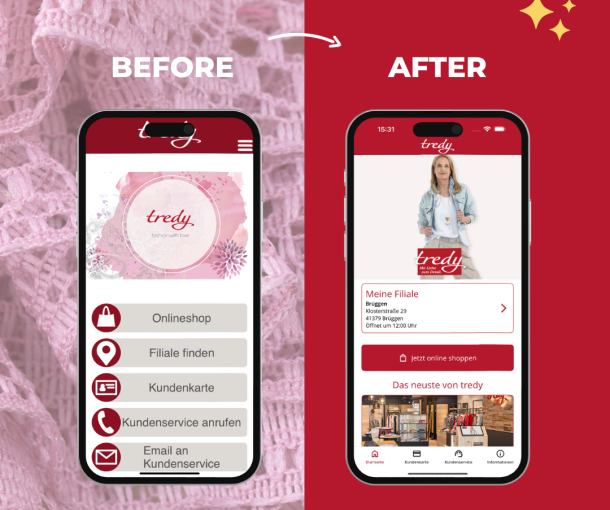Barrier-Free Access Act (BFSG): What SMEs need to know now

Mandatory from 2025: Digital accessibility for businesses
Digitalization has long been a central part of business life, but not everyone can use digital services equally. To change this, the Barrierefreiheitsstärkungsgesetz (BFSG) (Accessibility Enhancement Act) will come into force on June 28, 2025. It requires companies to make their digital products and services accessible.
For many small and medium-sized enterprises (SMEs), the question now is: Am I affected? And if so, what do I have to do?
The BFSG implements an EU directive and is intended to ensure that people with disabilities have the same unrestricted access to digital content as everyone else. This applies in particular to websites, online shops, mobile apps, and digital customer portals. Companies that do not comply with the legal requirements risk not only fines but also a significant competitive disadvantage. This is because an accessible website is not only a legal requirement, but also improves the user experience and makes your offering accessible to a larger target group.
Even if companies with fewer than 10 employees or an annual turnover of less than €2 million are not directly obliged to do so, it is still worthwhile to focus on accessibility at an early stage. This is because, in addition to the legal requirements, there is another decisive factor: around 25% of the European population lives with a disability. Those who open up to this market will gain new customers and strengthen their digital presence.
(Source: Federal Ministry for Economic Affairs and Climate Action)
How can a website become accessible?
An accessible website starts with simple but effective measures. Colors and contrasts should be chosen so that they are easy to read for people with visual impairments. It is also important to have a flexible font size that can be adjusted without disrupting the design. Many modern websites use fonts that are aesthetically pleasing but often difficult to read, which is a barrier for many users.
Another key element is navigation. Websites with complex menus, hidden buttons, or unlabeled icons can make it very difficult for people with motor or cognitive impairments to find their way around. Instead of relying on complicated animations and drop-down menus, clear, easy-to-understand structures should be preferred.
Images and videos must also be prepared in such a way that they can be used by everyone. Alternative text for images is essential so that screen readers can capture the content. Videos should be subtitled so that they can also be understood by people with hearing impairments.
Forms and interactive elements such as booking systems or payment processes are particularly challenging. Many websites use designs that are optimized for mouse or touchscreen users but are difficult to use for people who rely on keyboard navigation or voice control. A clear, easily recognizable structure, sufficient spacing between buttons, and the option to enter all information via keyboard are crucial.
Why mobile apps are a useful alternative
Websites cannot always be made accessible without considerable effort, especially if older systems or complicated technical solutions are used. A mobile app can be an effective alternative, as it offers several key advantages over a website.
While websites have to be optimized for different browsers, screen sizes, and input devices, mobile apps can be developed specifically for simple and intuitive use. On iOS and Android in particular, accessibility features are already deeply integrated into the operating system. Features such as VoiceOver (iOS) and TalkBack (Android) enable blind or visually impaired users to use apps without any problems.
In addition, color contrasts, font sizes, and touch controls are often easier to customize in apps than on a website. For companies, this means that with an app, they not only comply with legal requirements, but also offer a better user experience for everyone.
Another advantage is optimized user guidance. While a website has to constantly adapt to new web standards, an app can be developed to be accessible from the outset. Control elements such as buttons or menus can be made larger so that they are easier to use for people with motor impairments.
In addition, apps offer features that websites do not have, such as push notifications. Companies can provide their customers with relevant information without them having to actively visit a website. This can be a decisive advantage, especially for services that rely on regular interaction.
(Source: Apple Developer Accessibility Guidelines)
(Source: Google Android Accessibility)
Act now: The time for digital accessibility is now!
Even though the BFSG will not come into force until 2025, it is wise to act early. Retrofitting an existing website can be time-consuming, especially if fundamental structures need to be adapted. By addressing accessibility now, you can not only avoid legal risks, but also future-proof your digital presence.
As experts in mobile apps and digital solutions, we are happy to help you – whether you want to make an existing website accessible or are considering a modern app as a complementary solution.
📩 Contact us – together we will find the optimal solution for your company!
#Digitalization #SME #Accessibility #BFSG #MobileApps #ShapingTheFuture
 English (United Kingdom)
English (United Kingdom)  Deutsch (Deutschland)
Deutsch (Deutschland) 

